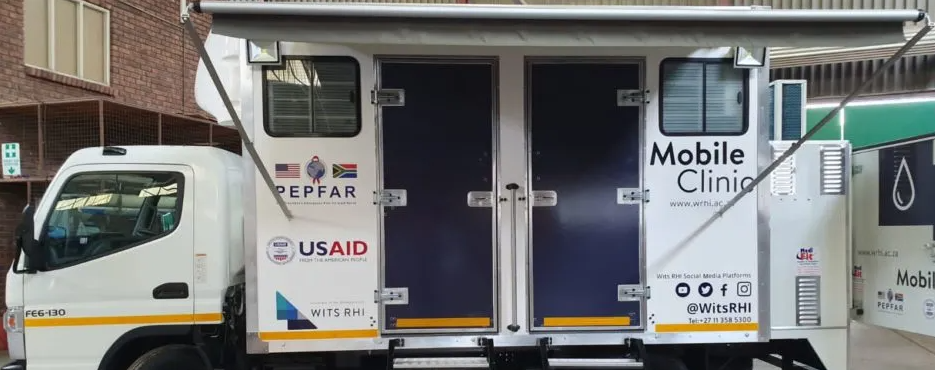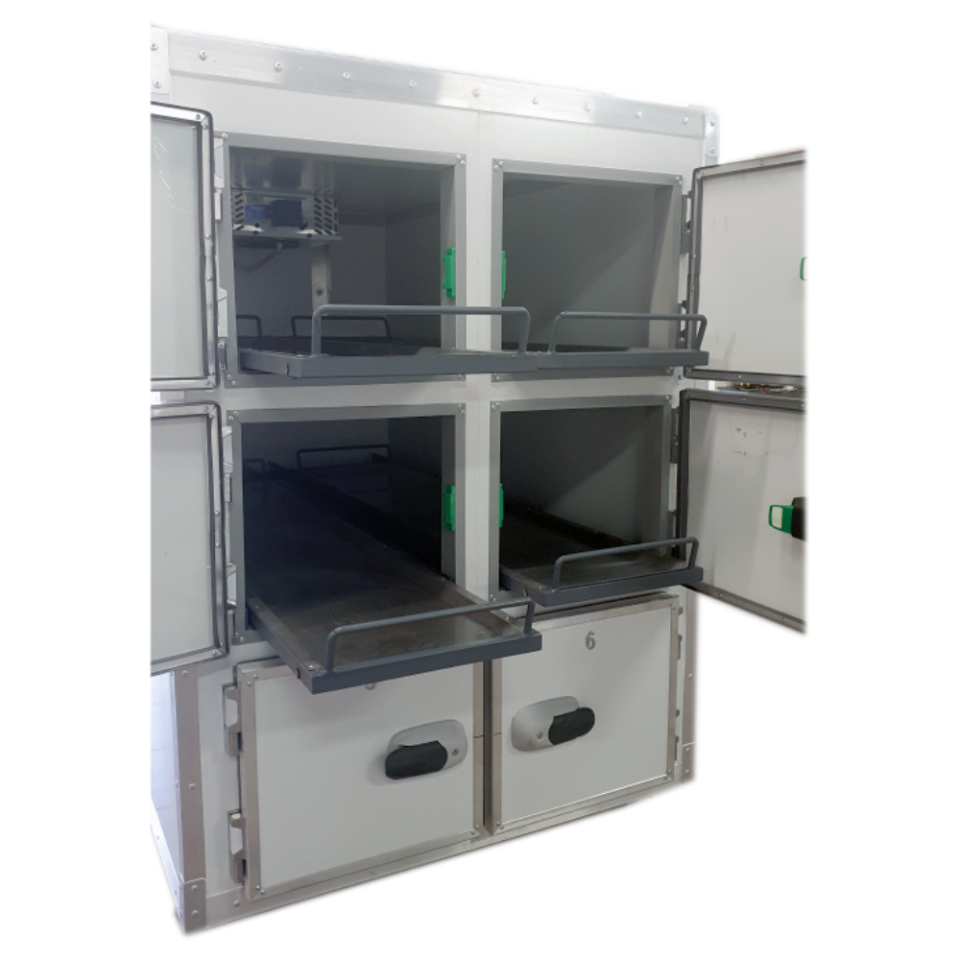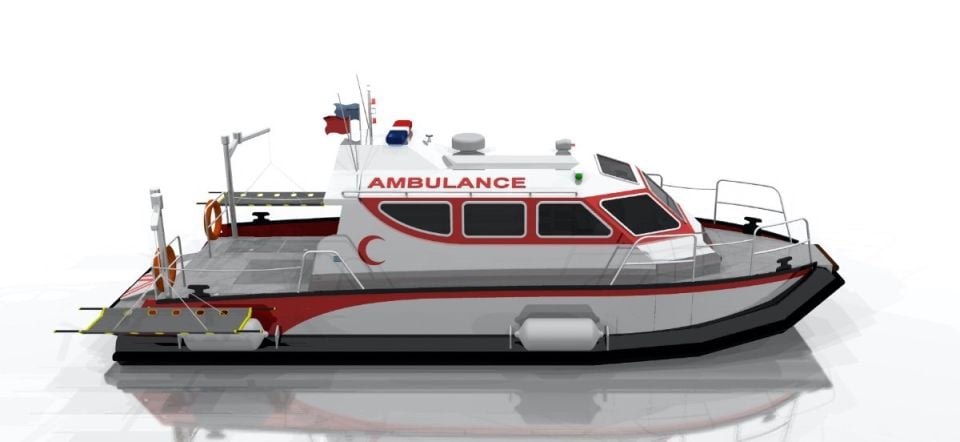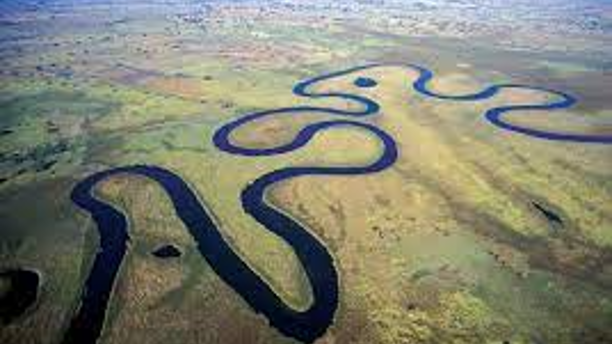Access to health care in the rural settlements of Okavango is critical
Fundraising campaign by
Keatile Sebinang
-
US$100.00Donated So Far
Campaign Story
Remote area dwellers in the Okavango face a significant barrier to primary health care services.
Botswana has reasonably resourced national programs intervention aimed at disease prevention, curative and palliative care, but inaccessibility to heath care remains a critical problem for remote area dwellers in the Okavango swamps, and this leaves them with no option but to resort to traditional healers and untrained birth attendants. These barriers are not only observed in Okavango region but also in some remotest areas in other parts of Botswana, a study by Hitchcock, Frost and Bachuk also revealed serious barriers to ARV and TB medications to the central Kgalagardi game reserve (CKGR) residents. These barriers have posed a great challenge to delivery and monitoring of important health care programs such as EPI, PMTCT, ARV Therapy, TB treatment, Malaria prevention, EMOnCH and Community Home Based Care.
Contributing factors leading to inaccessibility to health care services.
Long distance from health facility: Most of the remotest settlements in Okavango are at least > 70km away from the government health facility.
Lack of transport: There is no public transport, the nearby health facility does not have an ambulance, and there is no medical rescue vehicle nor police vehicle to assist in cases of emergency.
Lack of health personnel: There is no Health Education Assistant, no Registered Nurse, no Midwife, no Family nurse practitioner and no Medical Officer. Okavango is one of those districts less adored by many employees, once an employee is posted or transferred to Okavango they either resign or turn down the offer. Currently Okavango is operating with 1 midwife in the clinics with maternity and that totals to only 7 midwives in the district. The number of ARV prescribing nurses is also limited; the same applies to medical officers and this increases the need for regular outreach trips by specialist nurses and doctors.
Geographical location: The road is made from gravel or it’s too sandy or the area is an island and with limited resources and in appropriate vehicles for the environment, the government transport is failing to reach some areas.
Cultural beliefs and behaviours: The Basarwa;s family bond is so strong so much that it becomes a hindrance to health care accessibility, they believe that they should be together always, this does not apply only to the hunting season but also in other events, if a nurse attempts to refer a family member to a higher health facility, the family want to go with him or her, if the nurse refuses they also decline referral or if they happen to go they end up absconding from the hospital before completing treatment.
Introduction of the target population areas
The Okavango Delta is located in the northwestern part of Botswana; approximately 360 km from Maun is the main village Shakawe. The District is the third largest in the country. The Okavango River runs through the district. Within the Okavango, across the river there are some remotest areas of interest in regard to accessibility of health care services, and these are Gudigwa, Jao Flats, Seshokoro and its surrounding settlements, and the tourism resorts in the wilderness of the Okavango delta.
Gudigwa - Gudigwa is one of the remotest parts of the Okavango region, about318km from Gumare primary hospital and 21 km north of Beetsha where there is Maternity and ARV Clinic; it is the farthest village by road from the main service centre, Shakawe. To reach Gudigwa one has to cross by the ferry at Mohembo and drive 140 kilometers on a gravel road. It is inhabited by the Basarwa tribe.
Heath Accessibility Status: it’s a health post, run by registered nurse with no midwifery skills and Health Education assistant, who cover general health education and child weighing, Curative, and EPI services. EMOnCH and ARV services are accessed at Beetsha cliic. There is no ambulance for the health post; Patients walk 21 km to Beetsha for ANC and ARV services. Home deliveries and constant use of traditional healers are critical issues in this area..
Seshokora - Further north of Gudigwa there are 4 settlements; Muvumbi, Ndebere, Seshokora and Tsidzi. Seshokora as the main village is 390km from Gumare primary hospital, 70 km from Gudigwa health post and 91km from Beetsha a clinic with maternity and 10 km south of Namibian border. A group of Basarwa migrated from Gudigwa and Namibia to settle at Seshokora.
Health Accessibility Status: There is no public or any reliable transport to these areas. There is no health mobile stop, no health education assistant, no nurse. The residents of these areas travel 70 km by foot to seek health care services at gudigwa and beetsha. With verbal interview at the kgotla residents admitted that they don’t take children for immunization and they deliver at home because of lack of transport. Very few admit going to Gudigwa for assistance.
Jao Flats - Jao flats is a private concession lying in the very wetlands in the northwestern area of the Okavango delta, just below the Okavango panhandle, it is surrounded by water. The only transport mode is by air or by boats and traditional canoes. The major barrier to health services is the water route. Residents access health care services at Etsha13 and Seronga which is a 2 hours travel by speed boat and a couple of days by traditional canoes. Jao flats are staffed with Health Education assistant only, health services are offered by Seronga Clinic nurses on monthly basis and only when transport is available. Currently the clinic boats are out of order therefore no mobile visits are conducted. The only health benefit accessed in Jao flats is health education and child weighing. The inhabitants are the Bayei tribe.
Heath Accessibility Status: it’s a mobile stop within an island with no ambulance, it is run by Health Education assistant, who covers general health education and child weighing only. ARV, PMTCT, EPI and EMOnCH services are delivered by Seronga staff when they visit during mobile rounds and that is determined by availability of a boat transport. Home deliveries, defaulting of ARV treatment and constant use of traditional healers are common problems.
Surrounding Tourism Resorts- In the wilderness of the Okavango around jao flats, gudigwa and eretsha villages, there are a few lodges and camping sites (mapula Vumbora Kadizora and Bushman plains camp). The primary inhabitants of these resorts are the locals San, bayei and hambukushu tribes who serve as employees; they face the greatest challenge of accessing health care services because they are only allowed to go out of the camps when they are off duty. From time to time they come to health facilities to enroll in the health programs such as ANC and ARV program then disappear for months. The reports of defaulting treatment or missing appointments among this population is of great a concern to the clinics and the DHMT. This is the critical area when it comes to monitoring of our health programs, and also raises the health dilemma, “whether to enroll or not to enroll in to the national programs”.
Heath Accessibility Status: There are no mobile stops. No transport and no health care providers in these resorts. Even if workers can get some days off there is no how they can travel to the nearest health facilities due to lack of transport and fear of wildlife predators in the national parks.
With the aid of extensive literature review, the live scenarios and day to day interaction with challenging situations by Ms Sebinang, whilst working as a Family nurse practitioner and midwife in the Okavango, particularly Seronga and Beetsha catchment areas, for more than ten years, her observation and conclusions are that the health care barriers in the remotest areas of Okavango are a great hindrance to delivery of quality of care. The important programs resourced by ministry of health are not fully delivered to all citizens and even if they are implemented, they are not fully monitored for efficacy. ANC women come for initial registration and never return and ARV patients start HAART and disappear, and there are no means of follow up due to lack of transport in the Okavango health facilities.
The main objective of this model are.
- To take health care services to the rural settlements and tourism resorts.
- To ensure equal distribution of health care services among Batswana.
- Eradicate the fear of separation as there will be limited referrals.
- To improve adherence to TB, ANC, ARV and immunization schedules.
- To reduce lost to follow up cases.
- To reduce the number of home deliveries,
Scenario1 A primigravida was seen during ANC visits at Beetsha once then she defaulted, she was advised to go to Gumare for delivery as per EMOnCH protocol, but that did not happen, the parents went to the clinic to request transport and there was none, they decided to conduct deliver ay home, unfortunately it was a complicated delivery impacted shoulders, when the midwives Saw that its impossible for the baby to pass they pulled the head and twisted until the neck broke and the baby died, they then decided to hire a private vehicle to take them to Beetsha the head was out and only held by flesh, the shoulders were still in and when I asked how long she has been like that they said the whole night they have been pulling the baby but did not succeed. The mother’s vulva was bruised.
Scenario2. A multipara woman in Beetsha decides to deliver at home even though she was attending ANC well, somehow the baby failed to come out, and the relatives came to seek help, there was no ambulance in the clinic I had to walk 500m with the relative, when I got there I found the patient was taken to the back yard and a pit was dug for her to deliver the baby there, when I asked why they don’t use sheets or blankets they told me that according to their tradition a woman deliver on the sand and the baby is cleaned later, the umbilical cord was cut with a piece of glass, one could imagine the direct exposure of tetanus.
Scenario3. A nurse from gudigwa received a call from seshokora 70 km away and he attempted to go there with a worn out vehicle and when they were left with 15 km to reach the encountered a breakdown and the problem could only be fixed by mechanical officers from shakawe, there was no network coverage, the road is less travelled due to fear of animals, there was nowhere to get water or food as they thought it was a to and fro trip. They stayed there for 3 days with no vehicle passing by, on the 4th day they nurse and the driver had to walk to seshokora, they got assistance on the 5th day. After that incidence, no one is willing to take the risk.
2016 scenario4. It was during malaria peak season when I received a call from seshokora notifying me of the under-five child who has been sick for few days and was presenting with fever and convulsions, the mother had carried her on her back and was walking to beetsha approximately 91 km, I was told the woman had started off 3 days back and relatives were checking if she had arrived or not, as she had taken the wild life park route with wild predators, I called for an ambulance from Mogotho at around 7 am but the driver showed up at 4 pm, because he met with another emergency at seronga and had to attend to them first. There was no how I could blame the driver because the main problem was sharing of the ambulance, fortunately the passing by army officers assisted the woman.
Scenario 5. A woman come from mogotho about 75 km from beetsha to deliver at beetsha because there was no midwife at seronga, the following day I discharged the woman and with a day old baby during winter she was forced to go and wait under the tree to hitch hike, I called matrons office because I was very uncomfortable with the situation, the matron also told me that she tried everywhere and there was no transport, in the evening I went to check on her and she was still there, I took her back to the clinic as a lodger.
Scenario 6. A young khoisan mother delivered premature twins at home weighing 1.2 kg and 1.3 kg, they were brought to the clinic with breathing problem and since there was no incubator, I had to refer them to the primary hospital about 300 km away, both the mother and the relatives were against, that despite knowing the condition of the babies, the village chief and district commissioner had to intervene and I managed to take them to the hospital for admission, to my surprise the following day at night I was called again for the same woman, she had absconded from the hospital, when she got home the babies could not breath properly, I took her back to the hospital. After 2 days she absconded again and went back to her village and she was brought to the clinic again, this put me in a dilemma, I didn’t know what could be the best action then, either I return her home or to send her back to the hospital, I realized that both actions could end in neonatal deaths, as she will continue absconding, so I asked her why she did that and she told me that the hospital is far away from her village and she cannot stay away from her family, I then decided to keep her in the clinic, I insulated the babies with cotton wool, and kept them in empty surgical gloves boxes, I put up oxygen and inserted the naso gastric tube to help feed the babies with expressed breast milk, I kept the babies in the clinic until they reached 2 kg, I knew that was not the best decision but I had to take that step as I was helpless, but the mother was happy because her relatives came to check on her every day.
2017 Scenario 7. A woman starts labour and decides to stay at home until advanced on her way the membranes rupture and the husband leave her there and he rushes to the clinic to call me there was no ambulance at that time I had to walk when we got there the woman had already delivered and the baby was covered with sand and even inhaled sand.
Scenario 8. Home based care patient in Beetsha with bed sores died due to sepsis and hunger, she stayed a bit far from the clinic and to visit her regularly required transport which was not available, so the relatives were trained on how to manage the bed sores but they failed, one day we decided to take the risk of walking, and what we found was really bad, the bed sores had formed deep wounds which were filled with worms, when the relatives saw this they moved out and left here alone, when asked why they did that, they said they couldn’t stand the smell and they have other chores to attend to, so in the morning they would cook porridge and put water by her bed side and leave without feeding her. We referred her to Gumare where she got better and was discharged, but because she needed continued care which she could not get, she went back to the worst state and she died at home.
Scenario 9. I have witnessed families charged bizarre prices for hiring vehicles to transport corpses to distant areas, I have witnessed families failing to claim funeral insurance because their corpse was not certified dead, these happened because there is only one Medical officer in the area and when he is on leave families have to travel further but if they don’t have money they are bound to bury without death certification which results in losing their funeral claims.
Resolution to these issues is introduction of the mobile clinic.
The truck and boat Clinics are our structures of choice. As compared to building a structure, using a tuck mobile clinic and boat clinic s can be quicker and less costly. The Swamps mobile clinic will use vehicle and boat mobile clinics. The 4x4 truck will serve the areas the remotest arrears with heavy sand roads while the boat ambulance will serve the residents in the islands of the Okavango.
The truck and the boat cinics will be designed to provide an economical platform for delivering healthcare to underserved populations in the rural areas. They will be configured and outfitted with specific medical equipment to create a low-cost mobile clinic that will provide the critical needs of the patients. The capabilities of these mobile structures will be designed around the concept of a rural Nurse Practitioner that can provide not only routine clinical services, but can also deliver emergency care procedures. In addition to being equipped as a patient care emergency room for immediate care, the mobile clinic structures will be equipped to perform minor non-invasive procedures, such as suturing lacerations or conducting deliveries. The vehicle will have s a small sterilizer suitable for use with hand held instruments such as suturing sets, examination packs, delivery packs, refrigerator for vaccines and a network server. The proposed mobile clinic model includes the same type of equipment that one would find in a treatment room of a typical Emergency Room. The patient exam rooms include patient monitors, I.V. hooks, oxygen, patient stretcher, delivery bed, as well as assorted diagnostic equipment.
FACILITY OPERATIONS
- We intend to conduct weekly mobile outreach to the settlements to attend to outpatient consultations, injections and dressings.
- We will be available 24 hours for emergency for callouts.
- Emergency obstetric deliveries will be conducted at the family compound in the clinic vehicle or boat to maintain aseptic measures.
- Patients who need admission will be transported to a government facility with a doctor, currently its only seronga clinic which has a doctor in our target area. 150 km from Seshokora and 3 hours’ drive from Jao Flats Island, Beetsha is 41 km away from Seronga.
- The team will hire a medical officer, so that the residents can easily certify their dead and be able to reduce the costs incurred.
- There will be a mobile mortuary to assist the communities and help them cut the costs of travelling long distances to store the corpses.
Organizer
- Keatile Sebinang
- Seronga Okavango, BW
I am a Family Nurse Practitioner and Midwife, my aim is to improve health care accessibility in the remote areas of the Okavango swamps in Botswana.
I am a Family Nurse Practitioner and Midwife, my aim is to improve health care accessibility in the remote areas of the Okavango swamps in Botswana.
No updates for this campaign just yet
Donors & Comments
- Anonymous
- Donated on Nov 02, 2022
Followers
Support Campaigns
Create a support campaign in seconds!
Support campaigns allow you to get your own fundraising page dedicated to 'Access to health care in the rural settlements of Okavango is critical'
You'll have your own unique link that you can share, and all funds raised will go directly to 'Access to health care in the rural settlements of Okavango is critical'. It's the ultimate way to show your support!
Create support campaign






